Beetroot
A vitalising food for overall energy, it cleanses and nourishes the body and mind
Overview
Beetroot is the taproot component of beet greens, an edible plant that has been grown for thousands of years and began to be used medicinally in the Roman-era to alleviate blood and digestive concerns. Today, we understand the high dietary nitrate content (which converts into nitric oxide, the same molecule released via nasal breathing) in Beetroot serves as a mechanism to dilate our blood vessels, allowing for more energy delivery through the body, as well as cerebral blood flow into the brain. This coupled with its meaningful concentration of phytonutrients - which serve as anti-inflammatory vehicles by aiding in the reduction of stress in the body - make Beetroot a powerhouse for vitalising our energy levels. There is ongoing research into its blood pressure-reducing and cancer-preventative qualities. Just remember that most of the good stuff is contained in the peel of the beetroot!
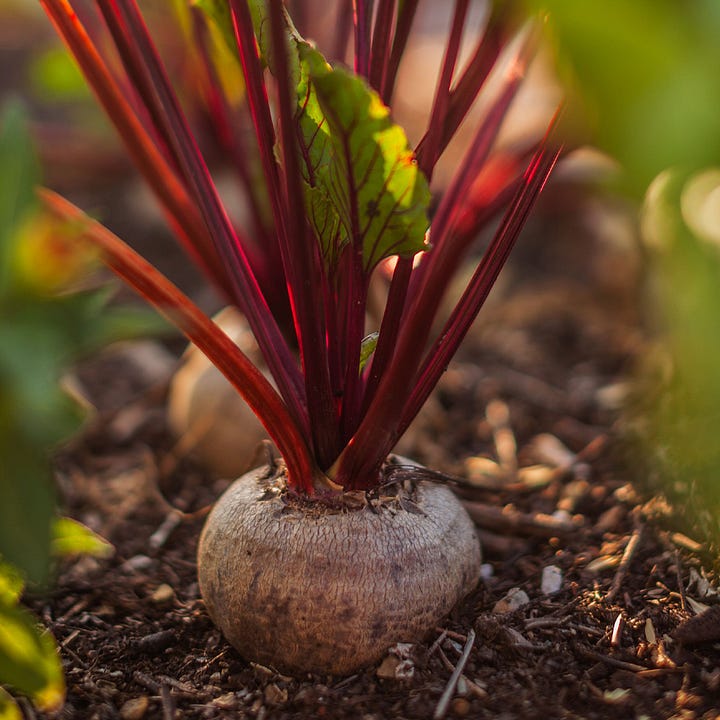

Qualities
· Natural energy boost · Stimulates blood flow · Astringent and sharp when raw · Warm and earthy when cooked · Sour and tangy when fermented · Anti-inflammatory · Neutral, balanced ·
Character of Beetroot
Beetroot is typically harvested bi-seasonally in the milder weather of spring and autumn. It is an easy food to grow in a home garden and can be ready in as little as 40 days, though the usual time to harvest is between 50-60 days. Once harvested, it is eaten in a variety of ways: in its raw form, being boiled, steamed (one of the best ways to cook it while retaining much of the nutrient profile), or roasted. It is also combined with water and salt to form a fermented variety, and as well as being pickled by adding vinegar and conducting a short heat sterilisation - in both cases allowing the beetroot to be preserved for longer periods. Fermenting beetroot generally tends to increase its nutritional value, while pickling will reduce the nutrient quality.
Growing Beetroot at Home
Shared via GrowVeg
All these varieties of both cultivating and cooking beetroot result in an assortment of character traits when we eat it. We’d like to hear about how you experience beetroot and its affects on your state in the polls below, though our suggestion is that overall it promotes a light Earth-Fire state. When we start to look at the unique ways of eating it, raw beetroot tends to have an astringent and sharp profile, where as boiled or steamed beetroot is more relaxing and warming with an earthy sweetness to it, and fermented beetroot brings about a distinct sour, tanginess about it that couples with beetroot’s nutrient profile to create an uplifting affect to our state.
Nutrition Information
Beetroot has a powerful nutritional profile, with a long history dating back to the ancient Egyptians and Romans of its medicinal affects. Modern science informs us that what appears to contribute to beetroot’s potent blood nourishing quality is the high amount of inorganic dietary nitrates it contains. These nitrates are transformed in the digestion process into a gaseous molecule called nitric oxide (that is also released in the nasal airways, when we breathe through our nose, but not our mouth) which has a vasodilating effect on our blood vessels, essentially promoting blood to flow more effortlessly throughout the body and into the brain. These nitrates are complemented by other phytonutrients in beetroot, such as betalains, carotenoids, flavanoids, and ascorbic acid. These phytonutrients, also commonly referred to as antioxidants, are able to de-stress the cells in our bodies. The raw and cooked (steamed) methods of consuming beetroot seem to preserve the largest concentration of these compounds, even over the concentrated powdered form because some of the nutritional value is lost in the drying process.
On the other hand, beetroot is deceptively high in sugar. Its macronutrient profile tells that us the vegetable in cooked (boiled) form is composed of 10% carbs, of which most are sugars (8%), 2% protein, and 2% fibre, with the remainder being mostly water. In addition, uncooked beetroots are high in oxalic acid, which can be irritating to the kidneys in excess, with the potential to evolve into kidney stones. This is particularly important to consider when juicing beetroot as the quantities consumed be quite high, even from a large glass for some people. As well as the oxalic acid, beetroots are a source of fructans (a type of carbohydrate classified as FODMAPs) and it is worthwhile to be aware that certain people have an awfully hard time digesting these. Of note, though, is that cooking or fermenting the beetroot tends to do away with most of these potentially disruptive components.
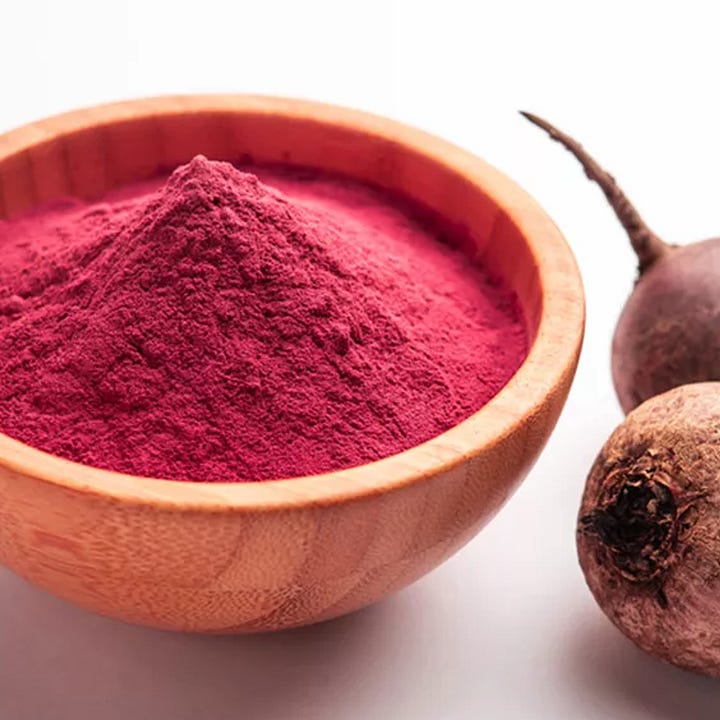
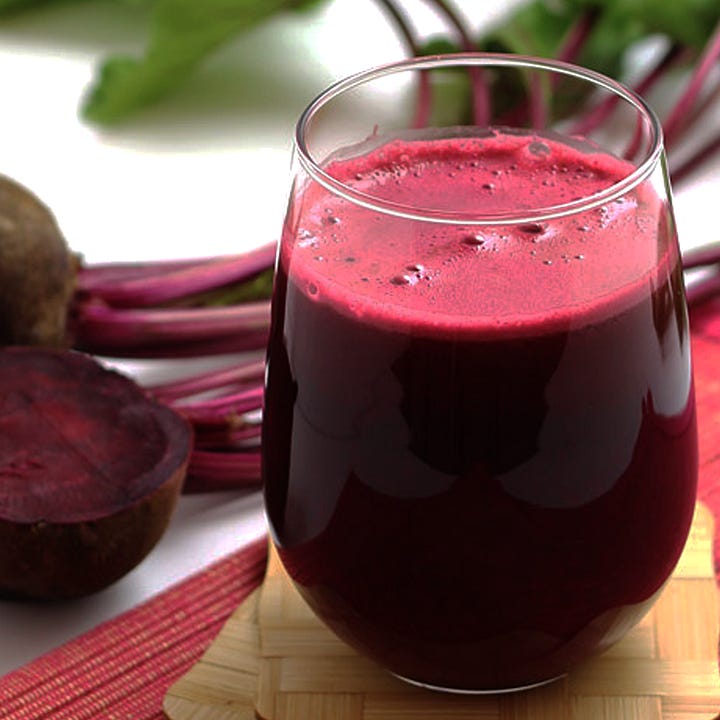
Scientific Research
The primary research around beetroot’s effect on the human biology has been in its benefits to cardiovascular health. This correlates with the material we have already covered on its blood nourishing and cellular de-stressing qualities. Additionally, studies have successfully looked into its ability to cleanse the liver, and potentially prevent the development of cancerous cells.
Cardiovascular health
Beetroot is a meaningful source of dietary nitrates. This paper in part explores the link between the health of the digestive system and its role in the bioactivation of nitrate, and the value these bioactivated nitrates play in supporting the cardiovascular system from issues such as hypertension, stroke, myocardial infarction and gastric ulceration.
(Lundberg et al., 2008) — https://www.nature.com/articles/nrd2466
In another study, it is again shown that ingestion of dietary nitrate (beetroot juice) results in bioactive nitrite substantially decreasing blood pressure, inhibiting platelet aggregation, and preventing endothelial dysfunction in healthy volunteers.
(Webb et al., 2008) — https://www.ahajournals.org/doi/10.1161/HYPERTENSIONAHA.107.103523
Cleansing the Liver
Research conducted explored the role beetroot juice played on the level of liver enzymes, and indicated a significant reduction in hepatic steatosis (excess liver fats) among the groups receiving beetroot juice.
(Fateh et al., 2023) — https://pmc.ncbi.nlm.nih.gov/articles/PMC10469647
Another paper found that beetroot can protect against iron-mediated liver damage by suppressing oxidative stress and cholinergic and purinergic activities while regulating gluconeogenesis.
(Ojo et al., 2024) — https://www.nature.com/articles/s41598-024-77503-6
Cancer Preventative
Carcinogenesis is the process whereby a normal cell is transformed into a neoplastic cell, and driving these stages are oxidative stress and inflammation. This paper worked to isolate a betanin/isobetanin concentrate from fresh beetroots, and showed that the concentrate significantly decreased cancer cell proliferation and viability, particularly in breast cancer cells. Importantly, the betanin-enriched extract had no obvious effect towards normal cell lines.
(Nowacki et al., 2015) — https://onlinelibrary.wiley.com/doi/10.1002/ptr.5491
A summary of cancer preventative effects of beetroot
(Lan Tan & Hamid, 2021) — https://pmc.ncbi.nlm.nih.gov/articles/PMC8020175/
Recipes
We’re working on this component to aware, and it’ll come soon enough.




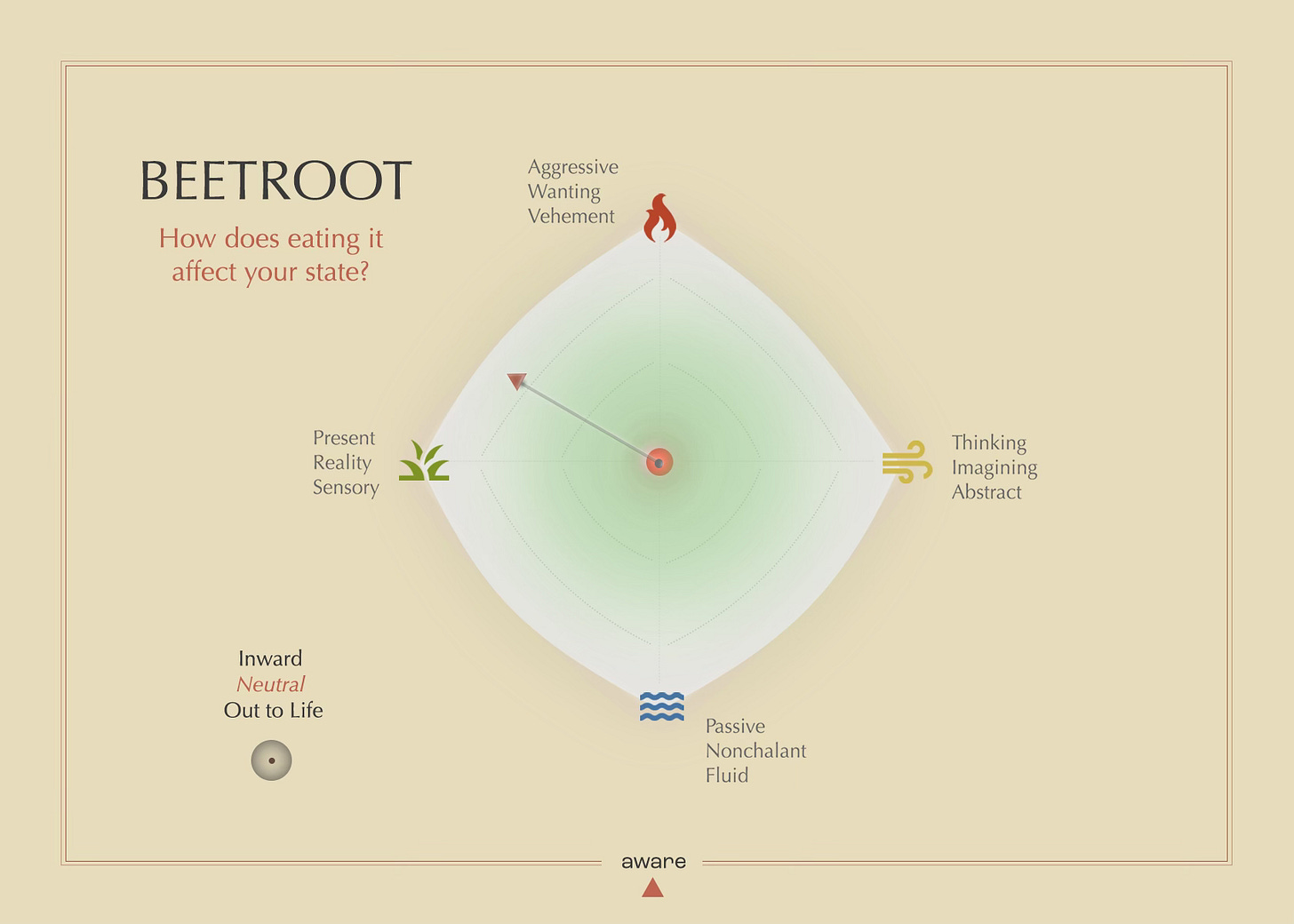
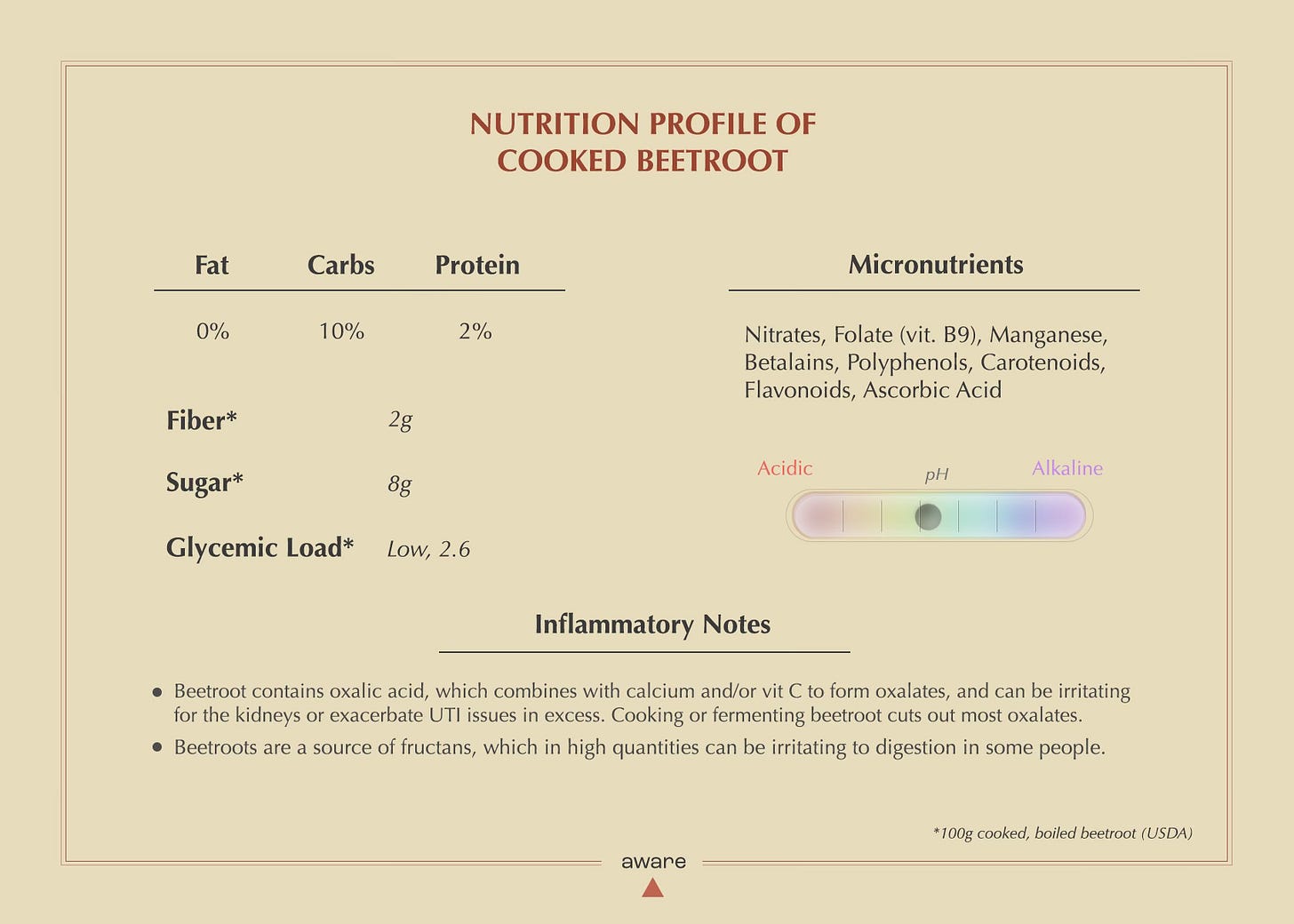
A great article 👏❤️